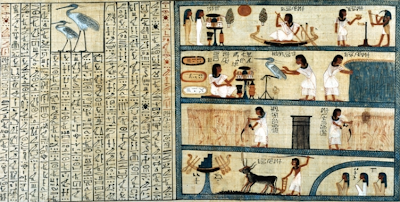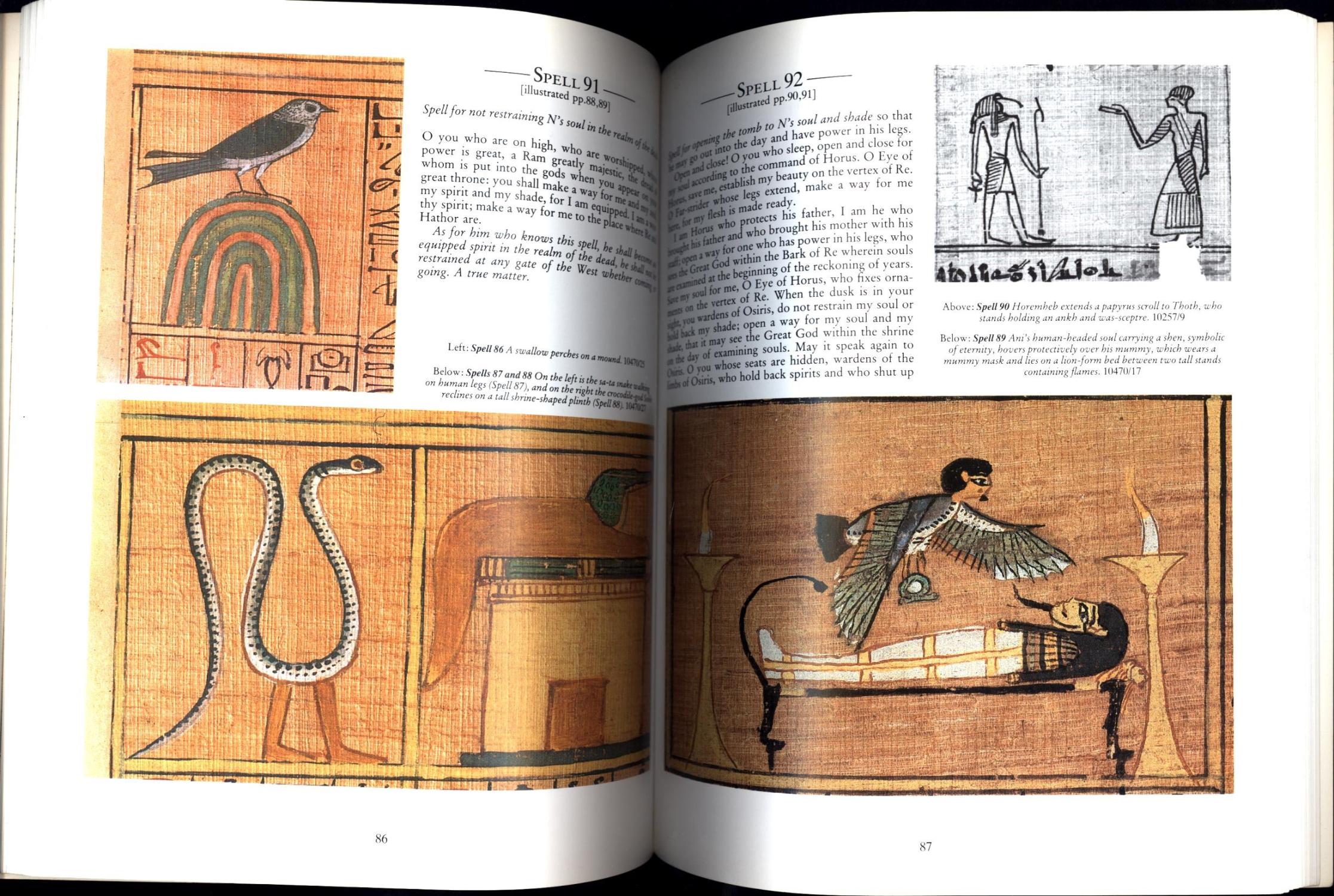Ancient Egyptian pharaohs even while alive had an eye on death and the transition thereafter. It explains the particular attention paid to the pyramids which served as burial chambers for the pharaohs, but also to close relatives like mothers, wives and children.
They believed the pyramids built with mathematical precision and aligned under important stars enabled the soul of the fallen to transcend to heaven or paradise.
Another critical aspect of the burial rite involved the mummification of the body and casting of spells as well as inscriptions etching on the sarcophagi of the pharaohs.
Thanks to German Egyptologist Karl Richard Lepsius, who in 1842 published a collection of ancient mortuary texts known in ancient Egypt as “The Chapters of Going Forth by Day” which he branded the ‘Book of the Dead’, a new understanding came to global citizens about Egyptian spirituality as well as their trials, joys and fears on the journey into death’s mysterious realm.

Egypt, c1350-1300 BC (Image Courtesy of The British Museum)
The key to Lepsius’ 200 chapter book was as a result of scholars learning to decipher hieroglyphs – the ancient Egypt language.
The texts were spells — magic “road maps” provided to the dead to navigate their way safely through the afterlife and thanks to Lepsius’ careful ordering of the spells and the assigning of a chapter number to each (system still being used) gave a new clarity to what pertained in ancient Egypt also called Kemet forged by Black Africans.
Originally intended solely for the use of royalty, the oldest parts of the Book of the Dead were drawn from funerary writings known as the Pyramid Texts, which date back as far as the Egyptian Old Kingdom, to as early as 2300 B.C.
Some historians hold that although the Book of the Dead was used earlier, they may be lost in antiquity and so with a copy appearing on the sarcophagus of the 13th-dynasty queen Mentuhotep (1633-1552 B.C.), she is regarded as one of the earliest to have the book used to pave her way to the other world.
However, between the Middle and New Kingdoms, use of the Book of the Dead was no longer limited to royalty as anyone with enough money to produce or acquire a version of the text could to pave his or her way after death.

Excerpts from the Book of the Dead were intoned by a priest during the funeral ceremony at the tomb. Next came a series of rituals to prepare the dead for their journey. Among these was the rite called “the opening of the mouth,” in which ritual tools were applied to the image of the deceased on the sarcophagus. It was believed this ceremony reactivated the senses of the corpse.
For the ancient Egyptians this was a moment of hope as expressed in the ninth chapter: “I have opened up every path which is in the sky and which is on earth, for I am the well-beloved son of my father Osiris. I am noble, I am a spirit, I am equipped; O all you gods and all you spirits, prepare a path for me.”
The Egyptians believed that the dead person would embark on a subterranean journey, tracing the route of Re also called Ra, the sun god. After disappearing with the setting sun in the west, Re passed under the world in a boat to return to his starting point in the east. During this journey, the deceased, aboard Re’s boat, would have to confront ferocious creatures barring the way to their new life. The most formidable of these was Apep, a serpent intent on stopping Re’s boat and bringing chaos to the world.
Apep would threaten Re every night. If the deceased were to come face-to-face with this terrifying creature, chapter 7 of the Book of the Dead was at hand to offer help: “I will not be inert for you, I will not be weak for you, your poison shall not enter my members, for my members are the members of Atum.”
Having made it past Apep, the deceased would eventually arrive at a labyrinth, protected by a series of gates. To go through each one, they had to recite a specific text and call out the name of the gate. If the correct prayer was offered, then the gate would say: “Pass, you are pure.”

Egypt, c. 1280 BC
(Image Courtesy of The British Museum)
Nationalgeographic.com noted after the labyrinth, the next stop was the Hall of Two Truths, where the dead would be judged by a panel of 42 judges presided over by the god of the underworld, Osiris. The “defendant” would swear they were innocent of a lengthy list of potential sins. Chapter 125 of the Book of the Dead includes many examples, including: “I have not slain people… I have not stolen the gods’ property… I have not caused (anyone) to weep… I have not carried out grain-profiteering… I have not (sinfully) copulated… I have not been the cause of terror… I have not been impatient… I have not slain sacred cattle.”
After the confession came the climax of the trial: the weighing of the heart. Anubis, the jackal god of mummification, held up a pair of scales. In one dish sat an ostrich feather, like that worn by the goddess of justice, Maat, and regarded as a symbol of truth. In the other dish was the dead person’s heart, embodying the actions carried out in their lifetime. If the feather and the heart balanced the scales, the dead person would pass the test. Those whose hearts weighed too much were considered impure and condemned to several horrific fates.
Among the worst fate which could befall one who fails the test is to suffer eternal punishment including eating one’s own excrement, enduring perpetual hunger and thirst, being boiled or devoured by a wild beast.
For those who pass the test, paradise opens to them in the plains of Aaru, where the happy land of the dead abounds with rivers, mountains and lush fertile fields.










